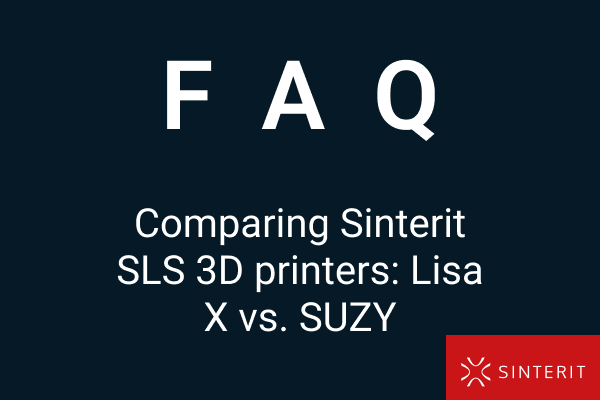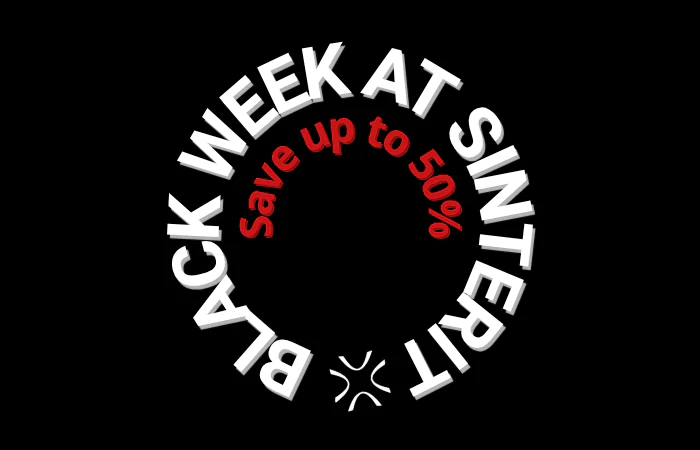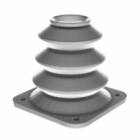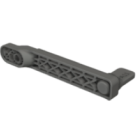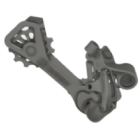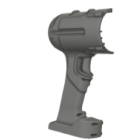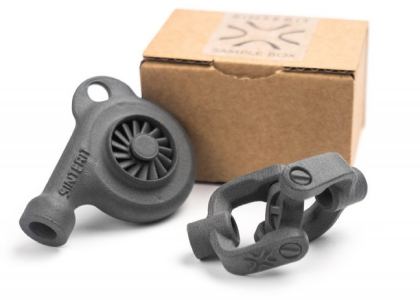How to choose the right SLS 3D printing material for your application
Choosing a material for Selective Laser Sintering (SLS) isn’t just a technical decision — it’s a strategic one. The right powder determines how your parts perform, how long they last, and whether your SLS system truly reaches its potential.
But with so many options — from flexible TPU to carbon-filled PA11 — it’s easy to get lost in the details. Many engineers fall into the trap of choosing “what worked last time,” instead of what’s optimal for their specific case.
To help you navigate this, Sinterit’s Application Engineer Jakub and Product Specialist Radek share a proven approach: understand the key factors that define your needs, then match them to the right application scenario.
Watch webinar
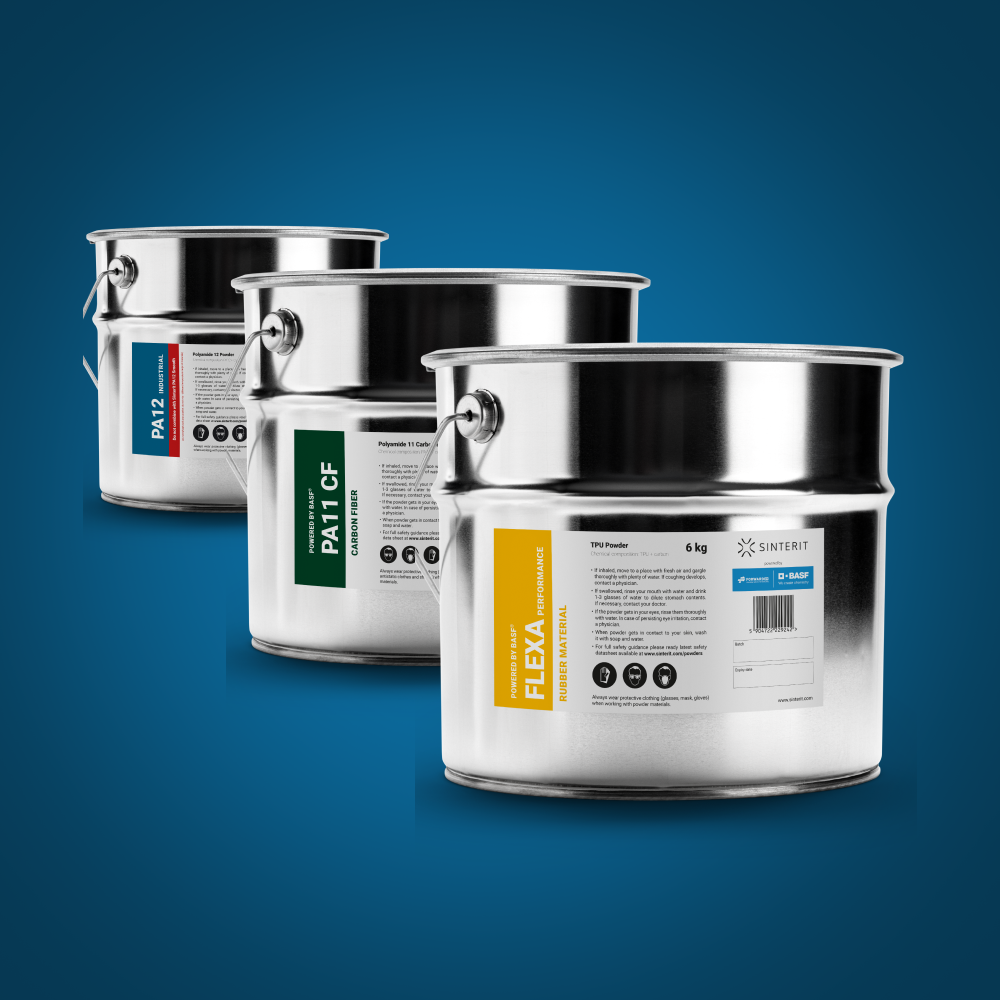
Key factors to consider when choosing an SLS material
1. Material properties that define performance
Every SLS project starts with one fundamental question: What do you expect from your part? Mechanical properties, flexibility, and resistance levels will guide your decision more than any brand name or color.
- Heat resistance: for high-temperature environments — such as automotive or drone components near engines — PA11 Carbon Fiber is unmatched. It offers excellent stiffness, strength, and the highest thermal endurance in Sinterit’s range.
- Flexibility: for parts that must bend, twist, or compress, TPU Flexa Performance delivers rubber-like elasticity while maintaining dimensional stability.
- ESD protection: if you’re producing enclosures for electronics, PA11 ESD ensures safety against electrostatic discharge.
These are your “instant picks.” They solve specific problems quickly and form a foundation for deeper material comparisons.
2. Post-processing and workflow efficiency
Beyond raw properties, how your parts behave after printing is just as critical.
Most Sinterit powders — PA12, PA11, and polypropylene — respond exceptionally well to vapor smoothing. This post-processing step seals the surface and gives a smooth, injection-mold-like finish – that’s ideal for both visual prototypes and functional products.
Meanwhile, PA11.5 deserves special attention for its cost efficiency: it doesn’t require nitrogen, which significantly lowers printing costs while maintaining great mechanical performance.
When you plan your material, think not only about the part — but about the entire workflow.
3. Economic and practical considerations
Budget and operational convenience also influence your material choice.
If your goal is balanced cost and performance, PA12 Industrial and PA11.5 are your go-to materials. They’re economical, easy to handle, and reliable in most SLS applications.
For high-performance or specialized cases, PA11 Carbon Fiber offers superior properties, but at a slightly higher cost due to its reinforcement ratio.
As Jakub notes, “It’s not only about what the part can do, but also how often you’ll print it and how much post-processing you can accept.”
How to match material to your application
1. Prototyping — visual and functional needs
Most SLS users begin with prototyping, but the goals vary widely.
- Visual prototyping focuses on design validation and aesthetics. Here, PA12 Smooth is ideal, producing fine details and smooth surfaces that can be further refined by vapor smoothing.
- For dimensional precision or assembly testing, PA12 Industrial delivers excellent accuracy and stability.
On the other hand, functional prototyping involves mechanical evaluation — bending, dropping, or load testing. For this, PA11 Onyx and PA11.5 shine due to their outstanding impact resistance and elongation at break.
Need a prototype that’s both stiff and strong? PA11 Carbon Fiber bridges both worlds, providing mechanical robustness with low weight — perfect for drone components or lightweight structures.
2. Production — from tooling to end-use parts
SLS technology is no longer limited to prototypes. Many manufacturers now rely on it for short-run production, jigs, fixtures, and final parts.
- Tooling and fixtures: PA12 Industrial combines stiffness and dimensional accuracy — ideal for robust, repeatable use.
- Functional end-use parts: PA11.5 and PA11 Onyx offer superior toughness and fatigue resistance, making them excellent for housings, machine parts, and enclosures.
- High-strength applications: PA11 Carbon Fiber provides the rigidity and heat resistance required for demanding environments like motorsport or aerospace.
- Chemical resistance: Polypropylene is the best choice for contact with chemicals or oils. It’s also weldable to OEM components, which makes it useful for automotive repairs and retrofits.
Each production case requires balancing performance with cost and post-processing — and that’s where Sinterit’s application engineers come in.
3. Education and research — learning and experimentation
For education, accessibility and material diversity matter. Printers like Sinterit Lisa X running PA12 Industrial and PA11.5 allow educators to demonstrate both stiffness and flexibility in one setup. These materials are forgiving, reliable, and ideal for teaching design for additive manufacturing (DfAM).
For research, flexibility is key. Sinterit’s open-material system lets R&D teams experiment with custom powders or third-party blends. Using Lisa X’s thermal profiles, researchers can modify sintering parameters starting from standard presets (like PA12 Industrial or PA11 Onyx) — ideal for developing new composites or studying powder behavior.
4. Medical and customized applications
SLS printing is revolutionizing medical and personalized manufacturing — from orthotics to surgical models.
- Orthoses and insoles: Flexa Performance and PA11.5 offer comfort, elasticity, and wear resistance, ideal for skin-contact products.
- Anatomical and surgical guides: PA12 Smooth provides detailed accuracy and polish needed for preoperative planning models.
- Biocompatible research: Sinterit’s upcoming food- and medical-grade materials will soon expand safe-contact applications even further.
As Radek notes, “In medical and custom projects, it’s always about the right balance — flexibility, surface quality, and comfort.”
How to match material to your application
Selecting the right powder isn’t always straightforward. Even experienced teams often need a second opinion — and that’s where Sinterit’s experts add value.
“Sometimes even for us, it’s not obvious at first glance,” says Jakub. “That’s why we meet with customers, discuss expectations, and run small-scale tests until we find the perfect match.”
This collaborative approach ensures you don’t just pick a material — you choose the right one for your workflow, your environment, and your product.
Frequently Asked Questions about SLS materials
For soft, rubber-like insoles, use Flexa Performance for its elasticity and durability. For stiffer designs, PA11 Onyx adds strength and rigidity. For balanced flexibility and impact resistance, PA11.5 is ideal. (Adjust insole thickness and lattice patterns to fine-tune comfort and performance.)
All SLS powders are highly isotropic, but PA12 Industrial stands out for uniform mechanical behavior — perfect for parts that endure multi-directional loads.
Yes — PBT (Polybutylene Terephthalate) combines biodegradability with strong mechanical performance, ideal for sustainable prototyping and design.
Currently, SLS lasers require dark powders (black or dark grey), but Sinterit is developing light-tinted variants that maintain optimal absorption and mechanical integrity.
Absolutely. PA12 Industrial is excellent for drone frames or housings, offering high stiffness with low weight. For more strength, PA11 Carbon Fiber or PA11.5 provide enhanced durability and impact resistance.
– PA11 Carbon Fiber for lightweight rigidity and temperature resistance
– PA11.5 for high impact durability
– Certified flame-retardant powders (UL94 V-0) available through Sinterit’s material partners
PA12 Industrial and PA11.5 are the most cost-effective, with strong reuse ratios. Sinterit also supports recycled MJF powders for budget-sensitive production.
Yes. Sinterit’s collaboration with Headmade Materials ensures Lisa X compatibility with CMF powders, enabling hybrid polymer–metal manufacturing.
Yes. A food-contact compliant SLS powder (EU/FDA standard) is under final development. Contact Sinterit for early access or testing inquiries.
Ready to find your ideal material?
Choosing the right SLS powder is both a science and an art — but you don’t have to figure it out alone. Our experts are here to help you make confident, data-driven decisions.
- Get a free consultation with our Application Engineer about your specific application — contact us.
- Learn more about SLS technology and how it can transform your workflow on our blog.
- See how SLS boosts productivity in industries from automotive to medical in case studies.


